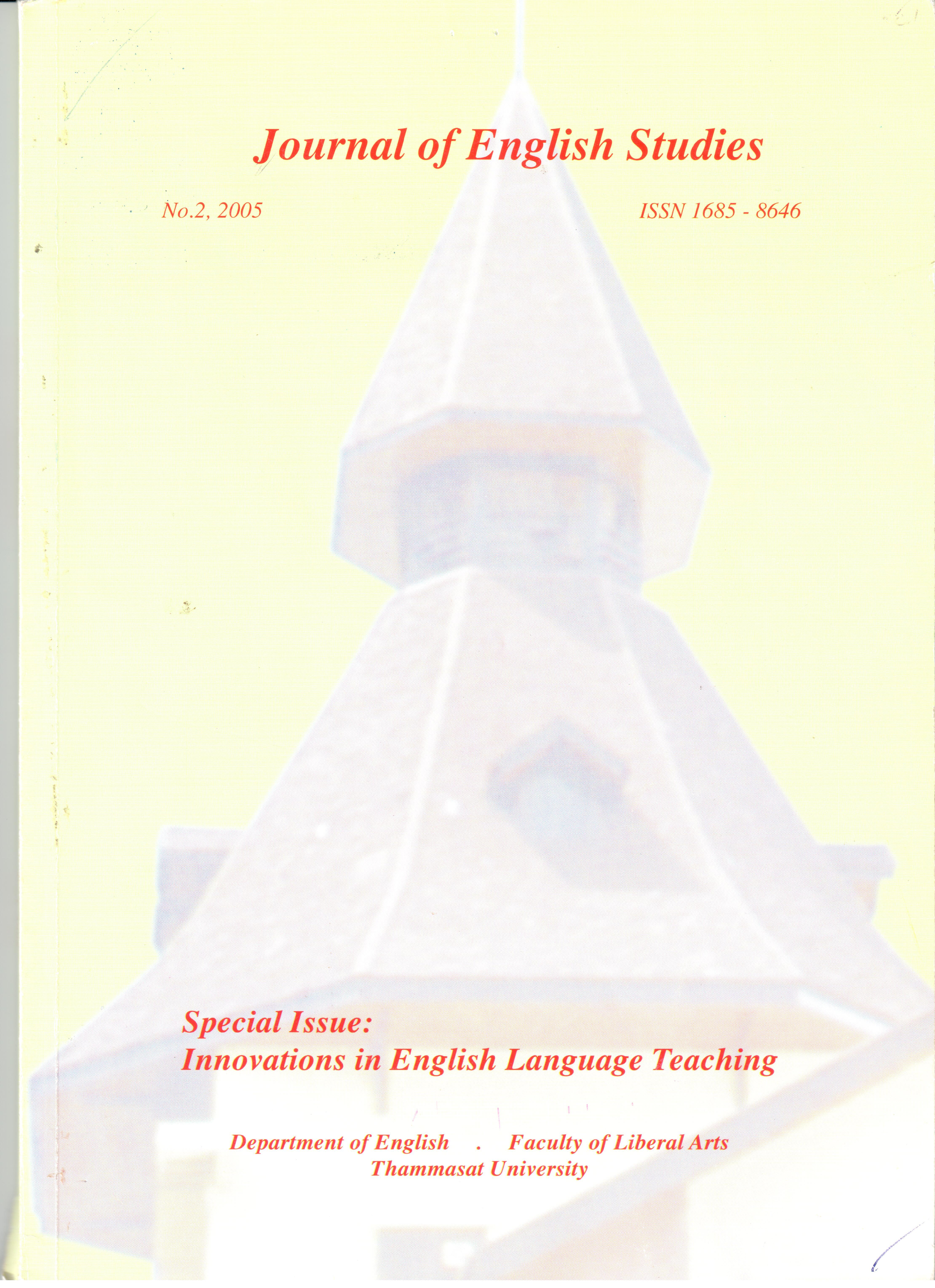Quantitative and Qualitative Views of EFL Learners' Strategies: A Focus on Communication Strategies
Main Article Content
Abstract
The purpose of this study was to investigate how Thai undergraduate students used their communication strategies while they were communicating in English. Factors considered were (1) the types of communication strategies (CSs) commonly used by the students, (2) the use of strategies by high and lower achievement groups, and (3) factors related to their strategy use.
The participants were 200 second-year students taking a listening & speaking English course at Thammasat University in the first semester of the academic year 2003.
Data was collected via (1) questionnaiares, (2) vido tapes of three different tasks in which the students were required to communicate with their partners, (3) observations and (4) retrospective interviews. Questionnaitres were used to obtain information about the types of communication strategies commonly used by the students and the use of strategies by higher and lower achievement groups whereas the tasks and retrospective interviews were designed to elicit information on factors related to their strategy use.
The findings of the study reveal that while communicating in English, the participants often used the folloing strategis (in order of frequency): (1) appeal for help, (2) approximation< (3) avoidance< (4) nonlinguistic signals, (5) circumlocution, and(6) code-switching. The lower achievement group of students was likely to use strategies that were less dependent on the knowledge English (i.e., appeal for help, avoidance and code-switching) significantly more often than their counterparts with levels at the.05, .05,and .01 respectively. Moreover, the high achievers were found to resort to cricumlocution (i.e., describing aspects of unknown words) significantly more frequently than the lower achievement group at the .05 level
Finally, factors found to be closely related to the use of CSs are:
(1) : levels of achievement in the lestening-speaking course
(2) : participants'perceptions about proficiency in English of the interlocutors
(3) : types of tasks they were engaging in
(4) : types of vocabulary that the participants had problems with
(5) : what the participants gained through the strategies
(6) : time and affort that the strategies required
(7) : satisfaction fro being able to communicate precisely as well as concisely.


